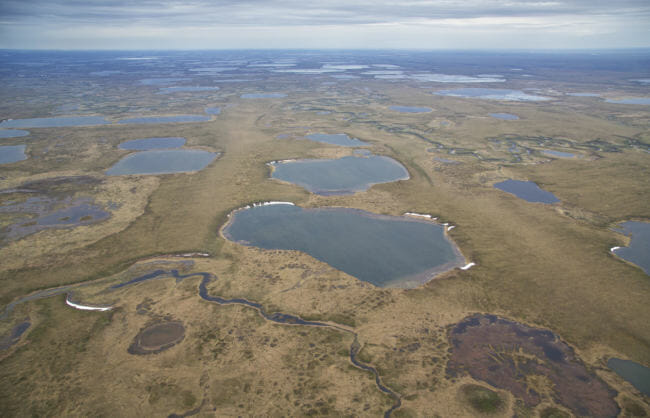
The National Petroleum Reserve in Alaska is a hot area for oil development right now. But don’t count on new production there to bail out the state budget any time soon.
That’s the takeaway from a previously unpublished, two-month-old analysis drafted by former independent Gov. Bill Walker’s administration.
The analysis, which is disputed by the major oil company in NPR-A, points out that at certain per-barrel prices, large-scale development in the reserve could cost the state hundreds of millions of dollars a year in the short-term, before adding billions to the state’s bottom line in the long-term.
Those short-term losses would accrue because Alaska law allows oil companies to deduct 35 percent of their investments from taxes they pay on existing oil production.
The analysis also notes that future state revenue from projects in the federal petroleum reserve won’t be the same as from projects on state lands. That’s because half of the royalties on federal land are paid to the federal government, while the other half go into an account that’s traditionally been set aside for grants to North Slope communities.
Anchorage Democratic Rep. Geran Tarr co-chaired the House Resources Committee last year. She said in a phone interview that the analysis counters arguments that new oil production could quickly fill the state’s big budget deficit.
“These headlines which have been in the news recently about this ‘North Slope renaissance’ – people are probably thinking, ‘Oh, wow, what’s going on? Is this going to be very positive, can this fix the problem?’ Well, it’s just not going to,” Tarr said.
The Walker administration’s analysis incorporates three big projects in the reserve – Greater Moose’s Tooth 1 and 2, and Willow – that are part of the portfolio of oil company ConocoPhillips. Oil is already flowing from GMT-1 and Conoco has started building GMT-2, but it’s still in the preliminary phases of developing Willow.
If all the projects are completed, the analysis says they could end up reducing state revenue by about $250 million a year for the next six years or so. Over the next 10 years, it says, the projects would reduce expected state revenue by about 6 percent, or $1.6 billion, if oil prices hover around $75 a barrel. Prices have fallen from $85 in October to $62 this week, and if they stay that low, the cost to the state of the new projects would be lower – because Conoco would have lower tax bills to apply its deductions against.
Oil company investment boosts Alaska’s economy in many ways outside the state budget, like through jobs, local property taxes and the grants to North Slope communities. Total revenue from the projects over the next 10 years would be about $3 billion when local, federal and private income is considered, the analysis says.
That figure rises to $18 billion over 20 years, of which the state share is $3.8 billion.
A Conoco executive, Scott Jepsen, said in a phone interview that it’s hard to judge the analysis without seeing the underlying data. Nonetheless, he thinks the analysis is “misleading,” adding that oil investment in the reserve “is not a drain on the state.”
“If you had no investment, yeah, for a year or so, you might have higher tax revenue. But long-term, you’re going to see significant shortfalls versus what you would have had if those investments were made,” said Jepsen, vice president of external affairs and transportation for ConocoPhillips Alaska. “You’ve got to be careful about how you try to characterize this as being negative on the budget. It’s actually going to be positive in terms of the revenue the state is going to have to spend as time goes by.”
The analysis was sent to key lawmakers Dec. 2 – the day before Republican Gov. Mike Dunleavy was sworn in.
The Dunleavy administration still stands behind its conclusions, said Chantal Walsh, director of the oil and gas division at the Department of Natural Resources.
The document is a “technical analysis” done by DNR and the Department of Revenue, she added, “and we feel it’s a pretty thorough technical evaluation.”




